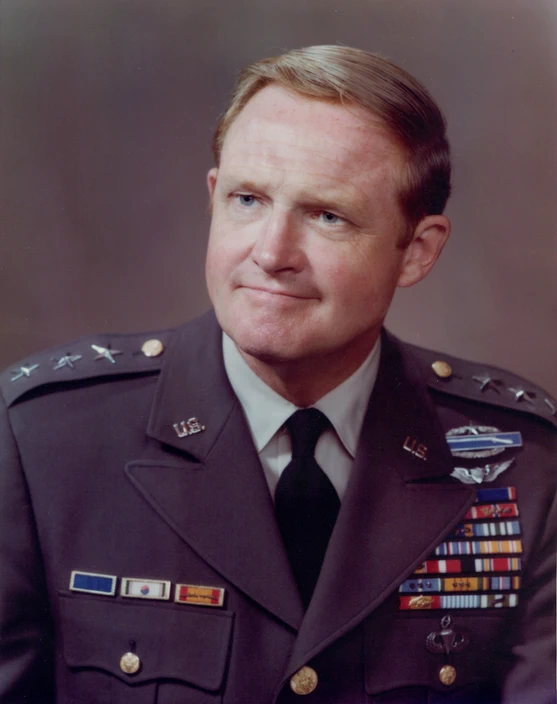 February 13, 1922 – February 10, 2017
February 13, 1922 – February 10, 2017
Gravesite: Section C, Site 259 at the Fort Moore Post Cemetery
Hal’s story began in Bardstown, Kentucky, a tiny community tucked in the foothills of the Ohio River Valley. His generation grew up hearing the harrowing tales of the Great War, the decadence of the Roaring Twenties, and experiencing the hardships of the Great Depression. Hal learned to appreciate the value of hard work. He took various odd jobs to help make ends meet – cutting grass, caddying, and even being a waterboy at the Guthrie Distillery Warehouse.
Unlike most teenagers of his day, Hal had a voracious appetite for reading and took a keen interest in all things military. When he wasn’t working, fishing or playing sports, Hal was at the library, devouring any book he could find on military history. Prompted by his father, Hal crystallized his goal of attending USMA when he was 15. In 1940, he accepted a patronage job at the Senate book warehouse that required him to drop out of high school and travel to DC while severely sick with the flu to meet the start date. Hal finished school at night and walked the halls of Congress in search of an appointment. Two years later, he obtained one to the USNA. Not wanting to settle, he convinced a Georgia Congressman to swap an unobligated USMA slot for Hal’s USNA from Kentucky.
After graduation, Hal served on occupation duty in Japan with the 11th Airborne Division. He returned to the 82nd Airborne where he married the great love of his life, Julie Compton. Bored with peacetime duty, Hal transferred to the Field Forces Board where he tested parachutes; surviving multiple malfunctions, including being hung up and towed behind a plane. Deployed to the Korean War in 1952, he joined the 7th Infantry Division, commanded Rifle and Heavy Mortar companies, served as a Regimental S3, Division Assistant G3, and was awarded two Bronze Star Medals for Valor.
Subsequent assignments included teaching tactics at USMA, developing airborne and air assault equipment in the Pentagon, and a tour of duty in Norway, where he planned the ground defense of Northern Europe. After attending the Naval War College, Hal took command of the 2nd Battalion, 23rd Infantry in the 11th Air Assault Division (Test), which focused on developing the air mobility operational framework. In 1965, the battalion was designated the 1st Battalion, 7th Cavalry and deployed to Vietnam as part of the 1st Cavalry Division.
Hal is best known for his leadership in the first major battle of the Vietnam War in the Ia Drang Valley in November 1965. Within 20 minutes of landing at LZ X-RAY, the 7th Cavalry, vastly outnumbered, was assaulted by hundreds of enemy furiously determined to over-run the LZ. After a three-day bloodbath, the enemy quit the field, leaving over six hundred of their dead. Hal was awarded the Distinguished Service Cross for his actions during the fight. Promoted to Colonel, Hal assumed command of the 3rd Brigade and led it through several campaigns in 1966. Often on the ground sharing the risks with his troopers and setting the example, he earned another Bronze Star Medal for Valor and three individual awards of the Vietnamese Cross of Gallantry with Palm. Hal loved soldiers deeply. When Bardstown announced it would celebrate his return with an elaborate “Hal Moore Day,” he refused to participate unless the event was changed to “Vietnam Veteran’s Day.”
In 1968, Hal pinned on his first star and led the planning for the Army’s withdrawal from Vietnam. He returned to Korea in 1969 as the Eighth Army G3 was frocked to Major General and given command of the 7th Infantry Division to straighten it out after it was fractured with insubordination and race riots. Over the next year, Hal rebuilt the Division back into a capable fighting force. In 1971, he took command of the Training Center at Fort Ord, CA in the era of the Vietnam antiwar demonstrations, drug problems, racial tensions and the transition to the modern volunteer Army. Hal applied lessons learned from Korea to create another successful outcome. In 1974, Hal was promoted to Lieutenant General and assigned as the DCSPER where he was most proud of his actions to rebuild an NCO Corps almost destroyed by the Vietnam War.
Following retirement in 1977, he worked as the Executive VP of the Crested Butte Mountain Resort in Colorado. In 1981, he turned his attention to researching his 1992 New York Times Bestselling book on the Ia Drang battles, We Were Soldiers Once… and Young. In 2002, the book was the basis of the acclaimed movie We Were Soldiers, in which Mel Gibson portrayed Hal. Throughout these years, Hal shared his combat leadership experiences and principles with soldiers in countless seminars. USMA recognized his character and contributions in 2003, designating him a Distinguished Graduate. Hal’s other books were We are Soldiers Still and Hal Moore on Leadership.
Hal was a dedicated outdoorsman who loved skiing, hiking, camping, and fishing. He was known for his finely tuned sense of humor, earning the nickname “Captain Fun” from his grandchildren. He would routinely send them funny postcards, add humorous annotations to children’s books for them to discover, and hide small toys around his home in anticipation of visits.
Hal was a courageous leader, loving husband, and father whose life exemplified the Academy credo of Duty, Honor, Country. His memory lives on in his writings and the hearts of the soldiers he inspired and mentored during his long, challenging life.